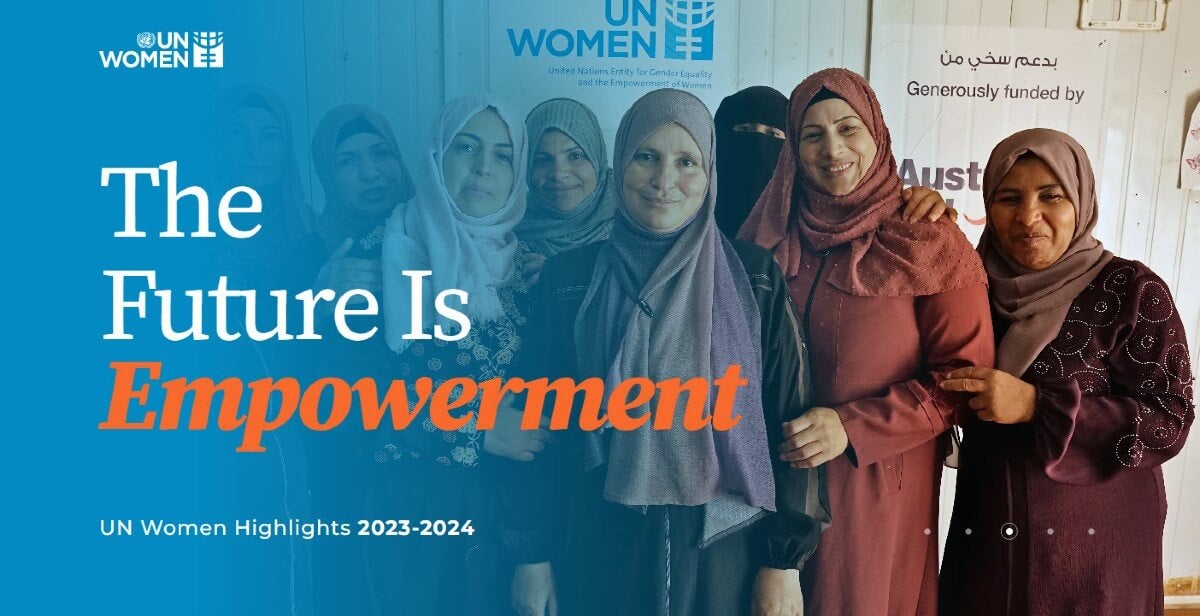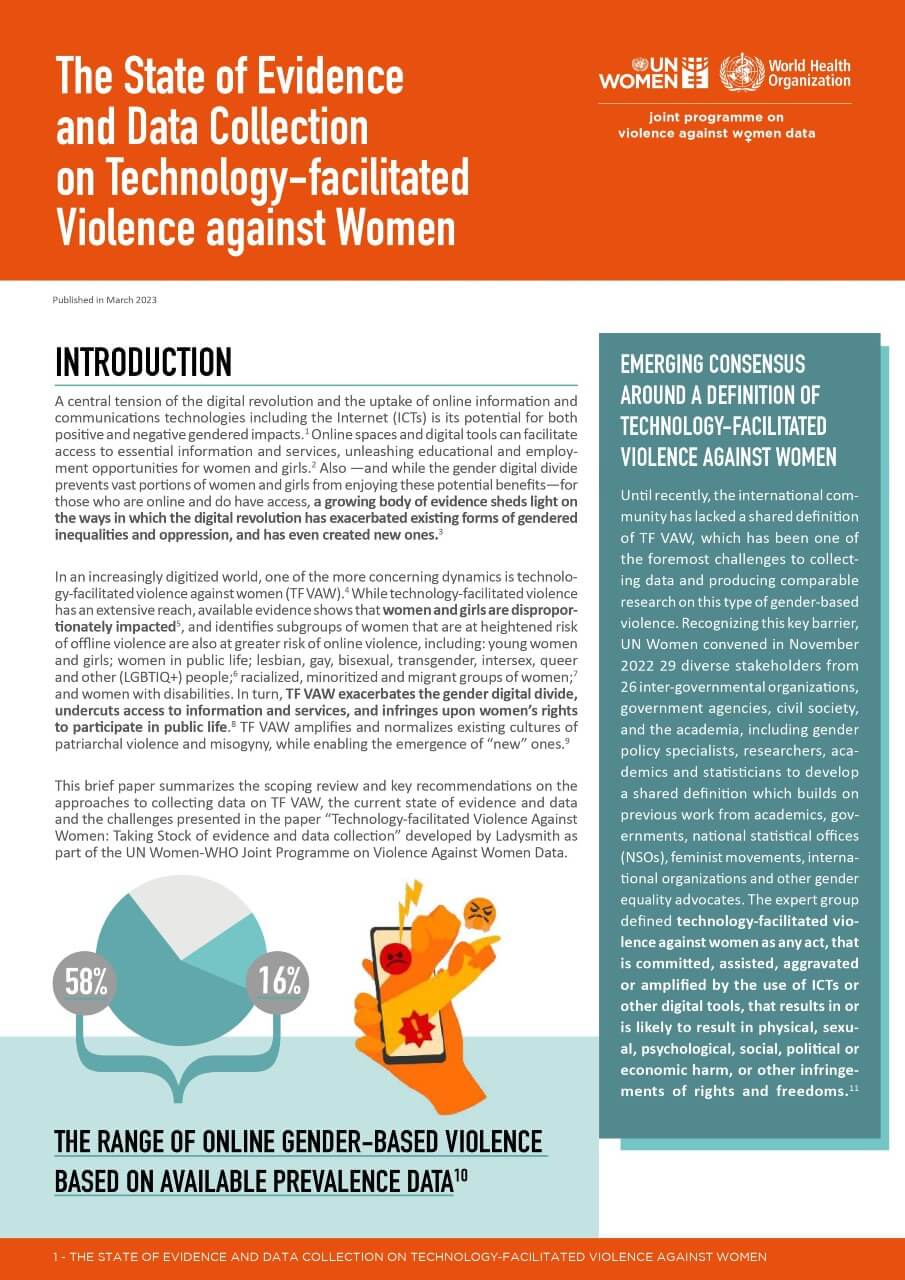Brief: The state of evidence and data collection on technology-facilitated violence against women
The digital revolution and the uptake of online information and communications technologies have both positive and negative gendered impacts. On the one hand, online spaces and digital tools can facilitate access to essential information and services, unleashing educational and employment opportunities for women and girls. But on the other hand, for those who are online and do have access, a growing body of evidence sheds light on the ways in which the digital revolution has exacerbated existing, and even created new, forms of gendered inequalities and oppression.
In an increasingly digitized world, one of the more concerning dynamics is technology-facilitated violence against women (TF VAW). While technology-facilitated violence has an extensive reach, available evidence shows that women and girls are disproportionately impacted and identifies subgroups of women that are at heightened risk of offline violence are also at greater risk of online violence, including:
- young women and girls;
- women in public life;
- LGBTIQ+ people;
- racialized, minoritized and migrant groups of women; and
- women with disabilities.
This brief paper summarizes the scoping review and key recommendations on the approaches to collecting data on TF VAW, the current state of evidence and data, and the challenges presented in the research paper, “Technology-facilitated violence against women: Taking stock of evidence and data collection”, developed by Ladysmith as part of the UN Women–WHO Joint Programme on Violence Against Women Data.










